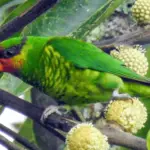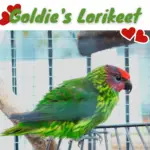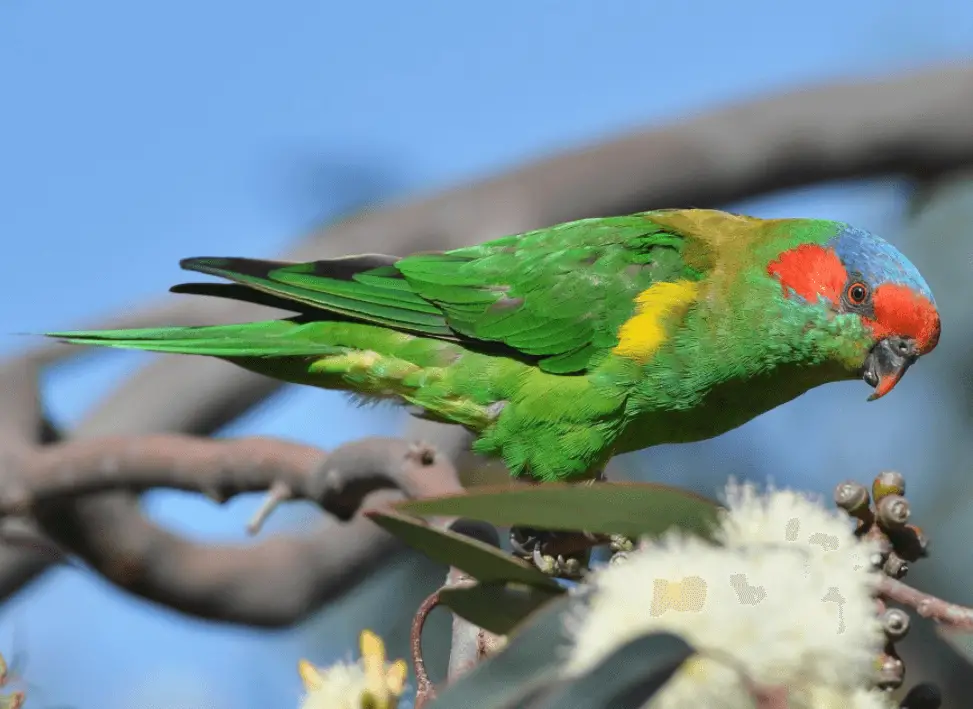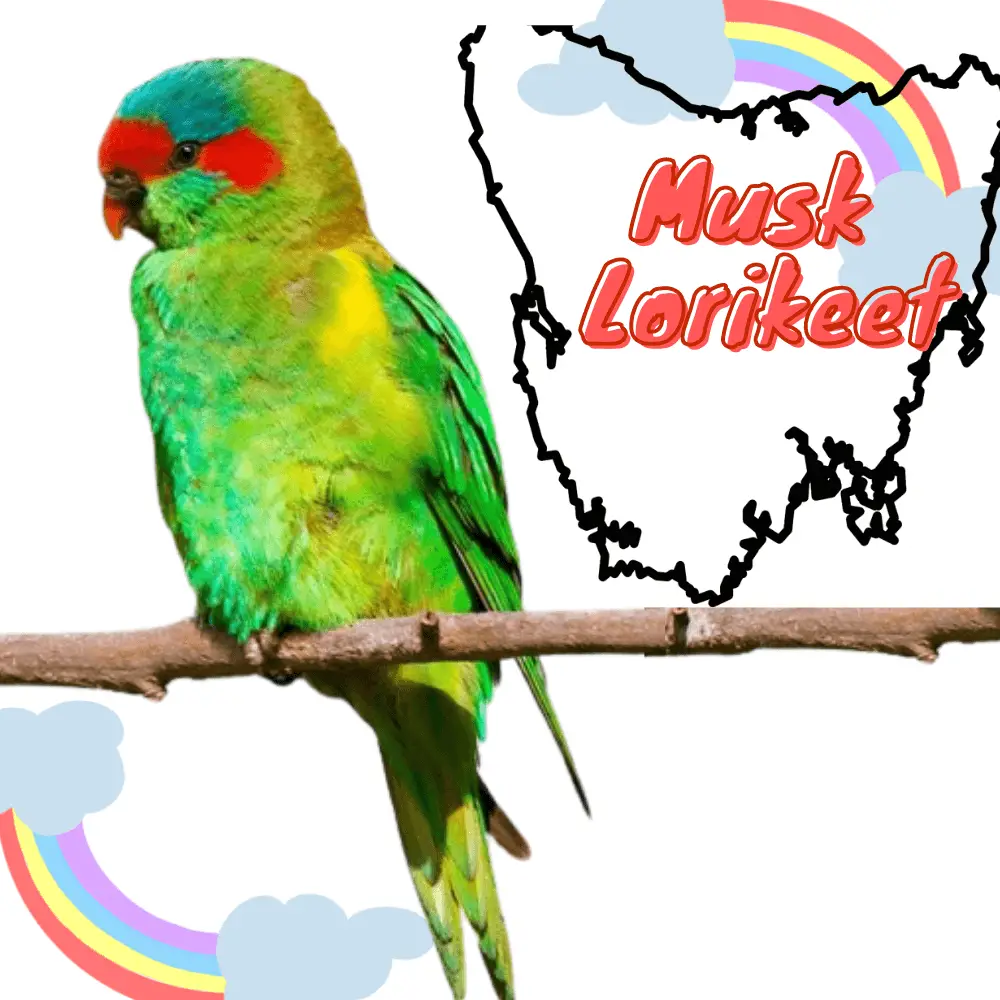
Musk Lorikeet 22 cm; 52–65 g. Bill blackish tipped orange; forecrown and ear-coverts red, with light blue streaking below eye; mid-crown dull blue shading to green on the hind crown and to olive-yellow on nape and mantle; back and wings green; tail green, with basal red on the underside of lateral feathers;
underparts and underwing coverts yellowish-green, yellow along upper flanks; legs greyish. The Female has less extensive blue on the crown. Immature duller, with dull red head markings.
Systematics History
Monotypic.
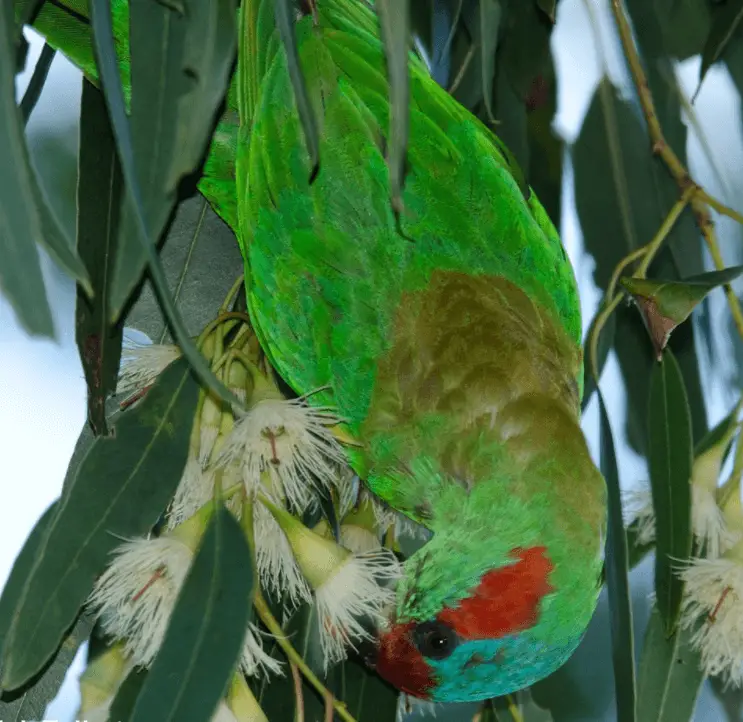
Distribution
E & SE Australia, Kangaroo I, and Tasmania.
Introducing Musk Lorikeets
SOURCE: BIBY TV
Habitat
Wooded country, preferring more open habitats such as eucalypt woodland, riparian growth, and farmland groves, penetrating suburban areas and parks.
Movement
Nomadic. Birds move about in response to the flowering of trees, but apparently, in a more predictable pattern than other lorikeets, birds tend to visit a particular area at regular intervals over a number of years. However, in some fruit-growing areas of Tasmania, the birds’ presence is difficult to predict, with large flocks often forming.
Musk Lorikeet Diet
Nectar, pollen, and blossoms, especially of eucalypts, flowers, young shoots, and buds of Callistemon citrinus, Grevillea robusta, and Angophora; also berries, fruits, seeds, and insects, sometimes becoming a pest in orchards and on maize and sorghum crops.
Can musk lorikeets talk
Commonest musk lorikeet call a shrill rolling screech “krree” or “kirree”, given both in flight and from perch. In the latter case, the repertoire is slightly more extensive with several similar-sounding rolling notes covering a wider frequency range.
Musk lorikeet pet
SOURCE: BIBY TV
Breeding
Aug–Jan. Nest in a hollow limb or hole in the tree, usually high in a living eucalypt near water. Eggs usually only 2; in captivity, incubation 21–22 days (28–30 days also recorded), nestling period 45–50 days.
Conservation Status
Not globally threatened. CITES II. Very common throughout mainland Australian range except in alpine region.

